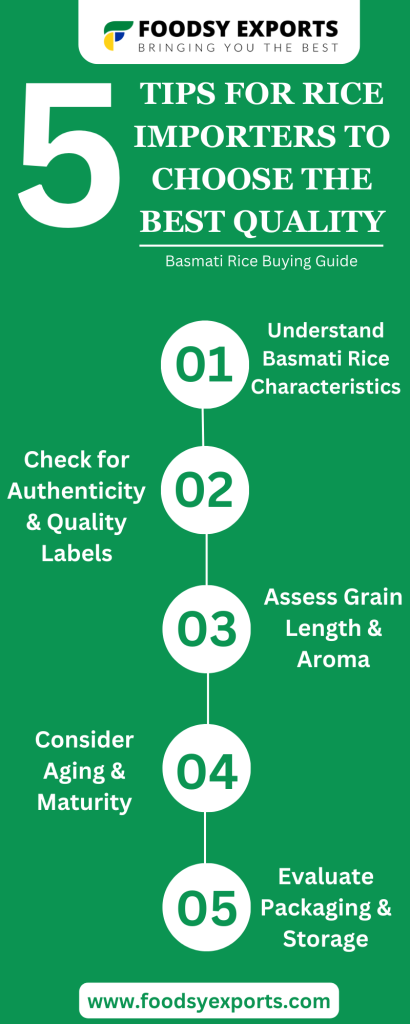Introduction:
When it comes to sourcing the finest basmati rice, rice importers have the responsibility of selecting the best quality grains that meet the expectations of their customers. With numerous options available in the market, it can be challenging to determine which basmati rice will deliver the exceptional taste, aroma, and texture that define this premium grain. In this blog, we provide essential tips and insights to help rice importers make informed decisions when buying basmati rice. From assessing grain quality to understanding labeling and packaging, let’s navigate the world of basmati rice and ensure you choose the best quality for your business.
Understand Basmati Rice Characteristics:
To make a well-informed purchase, it’s crucial to familiarize yourself with the key characteristics of basmati rice. These include long, slender grains with a distinctive aroma and a fluffy, non-sticky texture when cooked. By understanding these attributes, you can identify authentic basmati rice and ensure an authentic experience for your customers.
Check for Authenticity And Quality Labels:
Look for certifications and quality labels on the packaging of basmati rice. Authentic basmati rice is often certified by organizations such as the Basmati Export Development Foundation (BEDF) or the Agricultural and Processed Food Products Export Development Authority (APEDA) in India. These certifications assure buyers that the rice meets specific quality standards and is genuine basmati rice.
Assess Grain Length And Aroma:
The length of the grain is an important indicator of basmati rice quality. Longer grains are preferred as they tend to have a higher aroma and offer a more visually appealing presentation. Look for grains that are slender and elongated. Additionally, the rice should have a distinct aromatic fragrance, which is a hallmark of basmati rice.
Consider Aging And Maturity:
Basmati rice develops its unique flavor and aroma through a process called aging. The aging period allows the rice to mature and enhances its taste. Opt for basmati rice that has been aged for a minimum of one year, as this helps to achieve the desired flavor profile.
Evaluate Packaging And Storage:
Pay attention to the packaging of basmati rice. It should be air-tight and moisture-resistant to maintain the freshness and quality of the grains. Proper storage conditions, such as cool and dry environments, also play a crucial role in preserving the integrity of the rice. Choose suppliers who prioritize proper packaging and storage practices.
Conclusion:
Selecting the best quality basmati rice is essential for rice importers looking for exporters like Foodsy Exports to provide their customers with an exceptional culinary experience. By understanding the characteristics of basmati rice, checking for authenticity labels, assessing grain length and aroma, considering aging and maturity, and evaluating packaging and storage, you can confidently make informed purchasing decisions. Remember, the quality of basmati rice reflects your commitment to excellence and ensures customer satisfaction.





